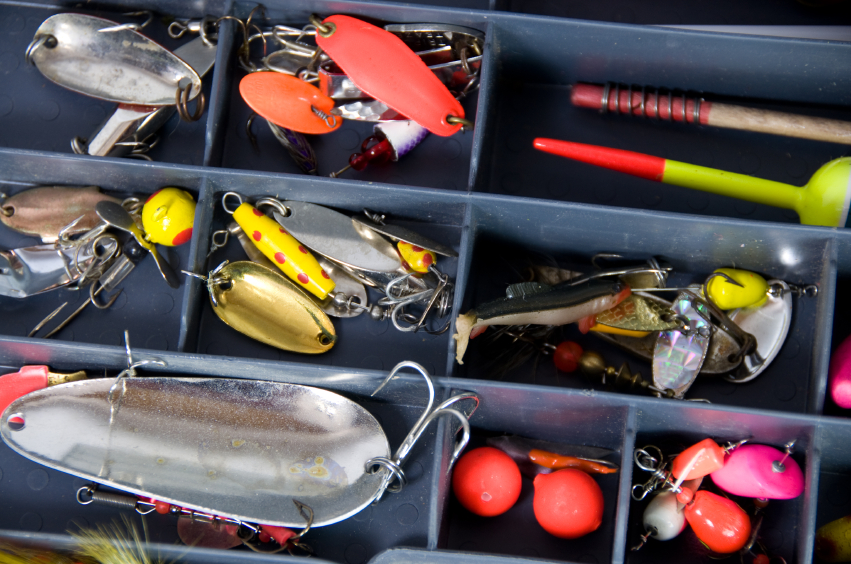Fishing resources and tips for the empowered female angler.
Top 10 Tackle Box Basics
April 20, 2012

Whether you’re a beginning angler or a seasoned veteran who has been fishing for years, there are certain staples that you should always have in your tackle box. Check out this short list of tackle box basics that can help keep you organized and prepared for every bite.
- Line and Leader Material: Always have extra fishing line and leader in your tackle box. Monofilament line tends to be the most popular due to its translucent nature and value, although braided line offers more strength per line diameter and holds up better to the elements. The weight of line you should keep on hand will depend on size and species of fish being targeted, type of water being fished, and type of tackle being used. When inshore saltwater fishing for snook, for example, you can use 15# braided line with 2 feet of 20#-30# fluorocarbon leader depending on the area you plan to fish. Use heavier leader when fishing near rocky shorelines and abrasive structures like docks or pilings.
- Hooks: Fishing hooks bend, get caught in trees, and are often snapped off on docks, so it’s important to include extra hooks on your list of tackle box basics. Hook sizes will depend on the size of the baits you are using and the type of fishing you plan to do. I use 2/0-5/0 size circle hooks when saltwater inshore fishing.
- Weights: Always keep a spare container of weights in your tackle box. Weights will help ensure that your baits get down into the portion of the water column where the fish are feeding. Egg weights are popular saltwater weights and split-shots are the most often used when freshwater fishing.
- Lures: Even if you’re accustomed to fishing with live bait, always have a few lures handy in the event that you run out of bait or want to try a variety of presentation techniques when the fish don’t seem to want whatever it is you are using. You never know what fish will hit if the conditions change.
- Pliers: Needle nose pliers are a key tool to have in your tackle box for taking the hooks out of the fish after you catch them.
- Clippers: Use nail clippers or buy special line clippers at your local tackle shop for cutting fishing line and re-tying leaders.
- Sunscreen: Protect yourself from the sun by keeping a bottle of sunscreen handy. Be sure to use a brand that blocks both UVA/UVB rays and contains zinc oxide.
- First Aid Kit: Accidents happen, so be sure to keep a small travel size first aid kit with you. Band-aids, antiseptic, waterproof medical tape, and a gauze pad or two should be enough for most minor fishing-related injuries.
- Bobbers: Bobbers or popping corks help give you an indication of when you’re getting bites from a fish. When the bobber goes down, you’re getting a bite. Bobbers are particularly useful if you plan to go fishing with kids.
- Fishing License: Always make sure you have your fishing license with you unless it’s a state designated free fishing day. When you purchase a fishing license, you not only abiding by the law, but helping to preserve our natural resources for generations to come. Not sure where to buy a license in your state? Visit TakeMeFishing.org for a list of state specific fishing regulations and to purchase your license online.
Now that you have a list of tackle box basics, you can print off hard copies of this list and keep them in your tackle box with a red pen. When you start getting low on certain items, circle them on the sheet of paper and take it with you to your local tackle shop when it’s time to re-stock.